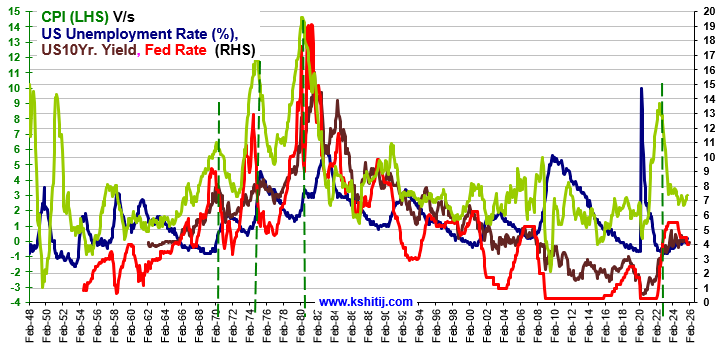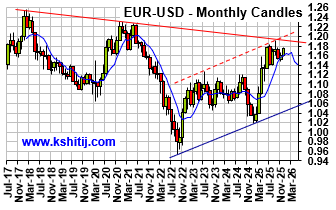Issues in Corporate Risk Management - Stick to Objectives; Series on Chart Pattern
Aug, 25, 2004 By Vikram Murarka 0 comments


In this Issue
- Series on Issues in Corporate Risk Management - Part 2 - Stick to Objectives
Issues in Corporate Risk Management
Keep the Objective in mind. It pays
The definition of proper Objectives is the first step in effective Corporate FX Risk Management. Get your objectives wrong and you are most likely courting trouble. We had taken this up in the Issue dated 28-Mar-04. Having set the correct objectives, the Risk Manager needs to keep them in mind after the Hedge Strategy has been implemented, so as to not be led astray by the market. It pays immensely.
A conglomerate with a Rupee Balance Sheet had a large foreign currency loan book, 85% of which was denominated in US Dollars. The balance was in D-Marks, Yen and Sterling. Circa 1994-95, the Risk Manager decided to reduce the currency concentration risk and rebalance the loan basket using Currency Swaps. The Objective was clearly defined as Risk Diversification.
It was decided to swap 10% of the Dollar loans into Yen. The Yen was chosen because interest rates were close to zero as compared to 6.50-6.75% on the USD 6-month Libor, giving a huge interest benefit. Further, the Yen was expected to weaken over a 3 year time frame. The Swap took place in Jan-95 near 100 on the USDJPY Spot.

Almost immediately thereafter, the Dollar dived against the Yen, to hit an all time low of 79.80 in April 1995. There were 3 months of intense agony. The company had never undertaken such a large forex deal. The Board was on the edge. Had the deal gone horribly wrong? The Risk Manager reminded the Board that the objective was Risk Diversification and only 10% of the loan book had been put on the line. Further, the deal had a 3 year tenor.
The market eventually turned around and the danger passed. The Swap came back into money. Now the Board was tempted to square off the trade and book whatever small profit was available. Again the Risk Manager stuck to his guns, saying the Objective was long term Currency Diversification, not short term Trading Profits. The Board backed down and the Swap was allowed to run its course.
The Yen eventually touched 120 in 1997. The company booked a huge currency and interest rate gain of almost $17 million. Those who have been in the market through that period would appreciate how difficult it must have been to steer such a trade through to its end. It is immensely commendable that the Risk Manager did not waver from the Objective, neither in bad times nor in good times.
The gains from the deal (which in itself was well conceptualized), was realized by remaining focused on the Objective.
Array
Since our last report (29-Oct-25, UST10Yr 3.985%) the US Fed has indeed reduced the Fed Rate by 25bp to 4.0%. Some economic data has started to …. Read More
Earlier in 2020, the Silver/Brent ratio rallied on sharp decline in Brent whereas it has rallied much higher in 2025 due to surge in precious metals. Will the ratio continue to rise in 2026? Or will it decline back sharply? … Read More
EURUSD has risen on Dollar weakness following the Fed’s 25 bp rate cut. With the Fed signaling one more cut in 2026 before a pause, the pair may remain stable at …. Read More
In our 09-Nov-25 report (10Yr GOI 6.51%) we again expected Inflation to rise sharply, but instead the CPI has again surprised by falling to 0.25% in Oct-25. The Q2 GDP has come in strong at … Read More
In our 11-Nov-25 report (USDJPY 154.10), we expected the USDJPY to initially decline towards 150 before eventually rising towards 158-160 in the long run. However, the pair limited … Read More
Our November ’25 Dollar Rupee Monthly Forecast is now available. To order a PAID copy, please click here and take a trial of our service.
- Kshitij Consultancy Services
- Email: info@kshitij.com
- Ph: 00-91-33-24892010
- Mobile: +91 9073942877










